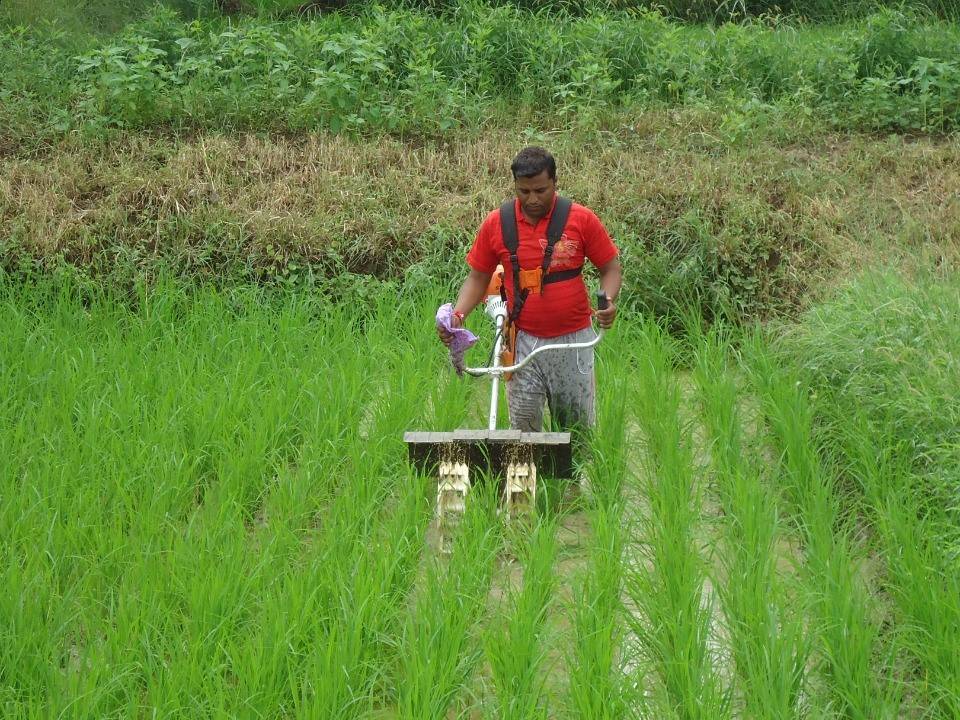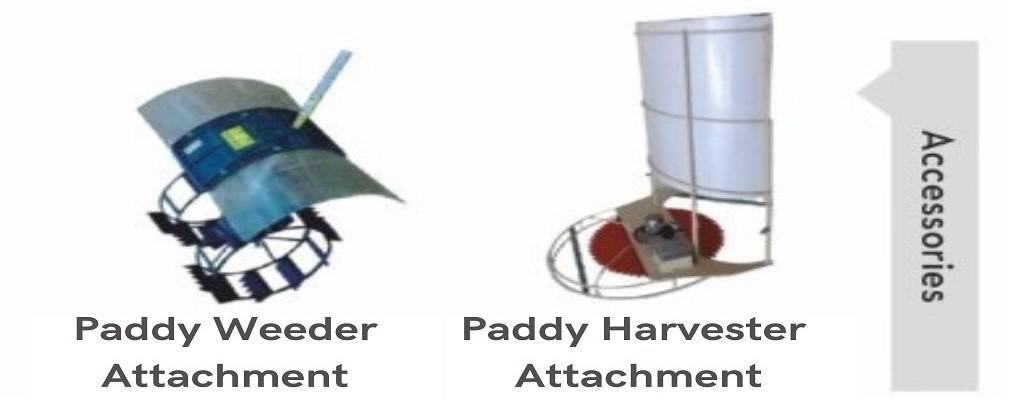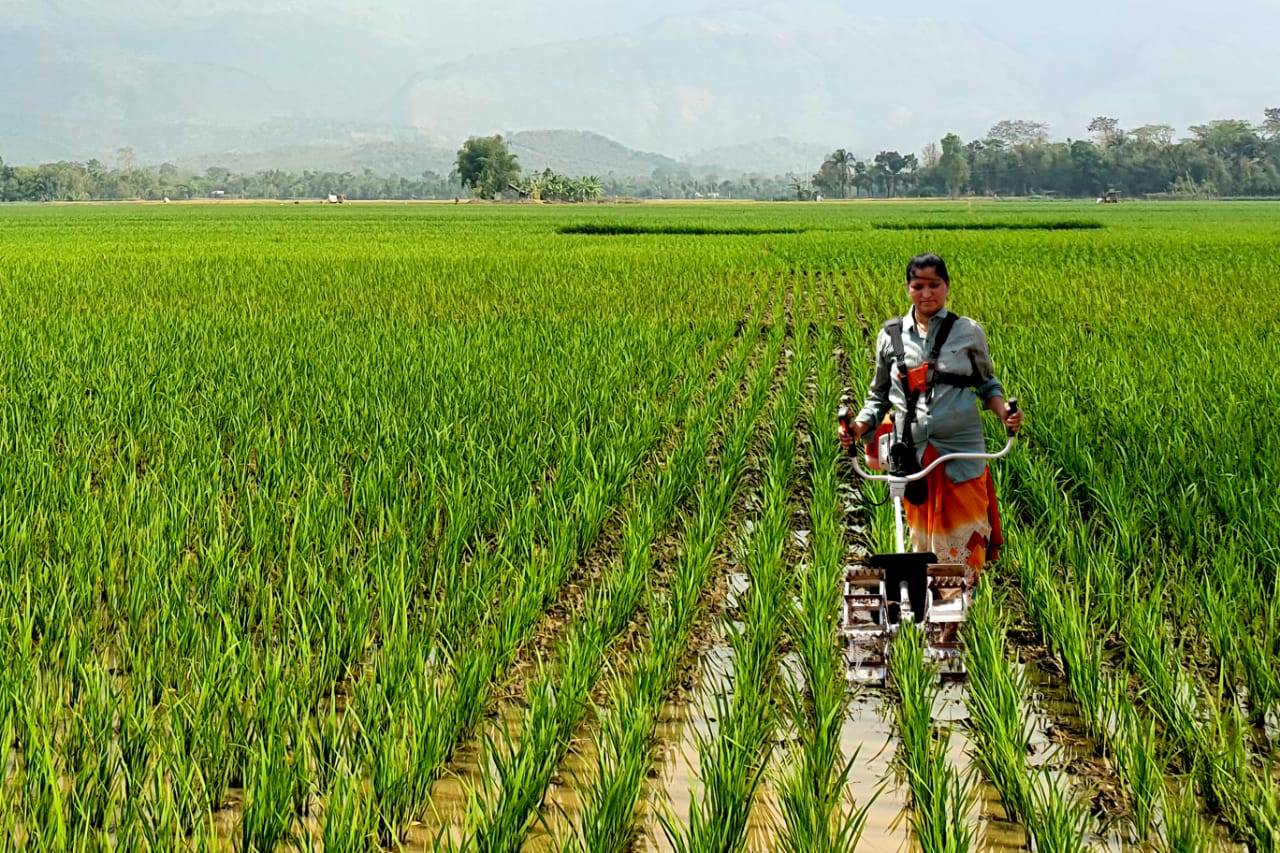
Inter-cultivation is the practice of tending a crop after it has been planted. It's also known as an after-operation. Intercultural operations are all the lighter and finer actions performed on the soil between sowing and harvesting. Weeding, thinning, gap filling, and earthing up are among them.
Intercultural operations help keep the soil loose and soft, allowing rainwater to be retained and organic fertilizer to be added to the soil. Intercultural equipment is the machines and devices that are employed for this objective. These intercultural equipments are most popular in SRI practice for paddy cultivation as they save labor costs and time and improve efficiency. Farmers following the SRI methods of paddy cultivation should use the machines mentioned in this article.
Here we guide you through the steps of inter-cultivation operations and suggest the equipment that can make the work more efficient, faster, and reduce labor.
Thinning & Gap Filling
Thinning is the process of removing seedlings that have not germinated or are unhealthy. Gap filling is the process of filling the gaps in between rows of paddy that have unhealthy seedlings. To do so, start by picking out all the unhealthy seedlings and then planting healthy seedlings in the same place. These two processes go hand in hand.
Thinning and gap filling can be done throughout the cultivation period but it is advised in the initial stages of crop growth between 14- 21 days of sowing. It is done manually using a khurpa or even with hands.
Weeding
Weeding is the process of removing unwanted plants. Weeding and hoeing are done at the same time. Hoeing is the process of disturbing the top soil with small hand tools to aerate the soil. When the seedlings are transplanted in rows, a paddy weeder is used to weed them. Weeding is necessary to reduce the competition of the weeds to the crop plants for light, space and water, and nutrients. Another reason for weeding is to get the expected yield from cultivation. Farmers that are using weedicides are advised to resort to manual or mechanical methods of weeding as weedicides are proven to be harmful to the consumer down the line.

It is advised to weed the paddy field after transplanting the crop to the field. Weeding can be done manually, however, to reduce labor and increase efficiency, it is advised to use weeding machines such as STIHL’s Paddy Weeder which was earlier known as KA 120 and now is known as FS 120. The Paddy Weeder performs applications like de-weeding in paddy crops smoothly.
Earthing Up
In the crop field, earthing up forms ridges and furrows, which eventually serve as irrigation channels. Weed growth and population are reduced by earthing up. Managing soil moisture and temperature, reducing weeds, and improving germination and emergence are just a few of the well-known benefits of earthing up. High yield and quality, extended growing season, increased nutritional value, improved storability, and so on are some of the benefits of earthing up. Using STIHL’s Ridger Adjustable attachment with MH 710 (Power Weeder), farmers can easily loosen up the soil and make ridges for the crop.
Harvesting
Harvesting in paddy refers to the cutting and gathering of panicles attached to the stalks. It starts after the inter-cultivation operations is done and the crop is fully grown. Harvesting at the right time and in the right way maximizes grain yield and minimizes grain losses and quality deterioration. Stihl's Paddy Weeder FS 120 along with the Paddy harvester Attachment can be used for paddy harvesting purposes.

Use Stihl Agriculture equipment to boost your paddy yield this season. To learn more about their equipment, visit their official website. For further information on these farm machineries, please contact the address provided:
Official email address- [email protected]
Phone number- 9028411222















